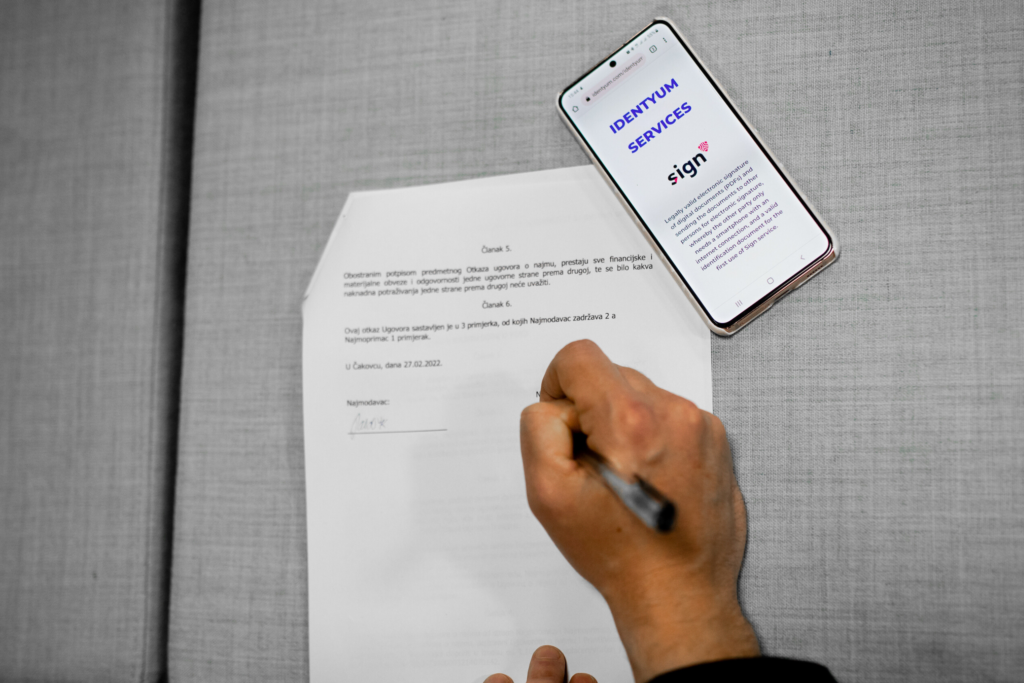Hiring and onboarding the right candidate is a crucial role of the HR department. Often, these processes are challenging, especially identity verification during the onboarding of new hires.
Some research indicates that, for example, Generation Z has specific expectations regarding the workplace, including job application, onboarding, and contract signing processes. This generation, known for being digital natives, displays distinct preferences that differ from previous generations.
Even before the first day, new employees have a lot of personal data to share with the employer and much paperwork to navigate and sign. To overcome this hassle, organizations should invest their resources in digital services that optimize the onboarding workflow, like remote identity verification, e-signatures, and digital ID wallets. This way, organizations can enable smoother experiences for their applicants.
Onboarding challenges
The onboarding process often presents challenges for both employers and new employees. Some common issues include:
- Physical presence requirements: Many employers require new employees to come to the office to sign employment paperwork and contracts. In today’s remote working way, this can cause delays if the new employee is relocating or has limited availability. Requiring in-person signatures makes onboarding much less efficient.
- Inefficient data collection: HR teams spend significant time collecting, verifying, and filing identity documents, tax forms, certifications, and other onboarding paperwork for each new employee. Manual data collection is time-consuming and prone to errors.
- GDPR compliance: When preparing an employment contract and collecting personal data from a new employee, employers frequently request a scan of an identification document. However, this practice falls into a gray area under GDPR. Employers must delete such scans, as retaining them may not fully comply with the principles of data minimization and necessity stipulated by GDPR.

How to improve employee onboarding?
Digital identity verification and e-signing services can significantly improve the onboarding process for both employers and employees.
While traditional identity verification is typically done face-to-face, digital is 100% online. One of the first steps in the employment process for HR is collecting the correct data from new hires to prepare employment documentation and fill out needed forms. For HR to complete these tasks digitally, employees can securely store verified identity documents like IDs in their ID Wallet. The ID wallet acts as a trusted source of identity data, as it lets HR, using identity verification services like Identify, securely access only the specific personal data needed for employment, like name, address, or date of birth. This minimizes the over-collection of employee data that often occurs. As digital identity verification services use cutting-edge technologies such as biometric facial recognition, document authentication, and liveness detection, they add to the highest data security standards, including encryption and secure data storage.

Identity verification gives employers immediate access to validated credentials during onboarding and reduces the administrative burden of collecting and verifying hard copies of these documents. This way, employers ensure that new hires are who they claim to be, reduce the risk of fraud, build trust with new employees, and help comply with data protection regulations like GDPR and Anti-Money Laundering (AML). Identity verification services can easily and quickly be integrated with a company’s HR information system and other onboarding resources.
The other step for HR is ensuring new hires sign the employment contract and other forms for employment and payment, which can be done before the first day at the office. With e-signing services like Sign, all onboarding documents, like employment contracts, can be signed remotely in a legally binding way, and there is no need for in-person hand signatures and physical paperwork. E-signing services can also seamlessly integrate with the HR system for new and existing employees to securely sign all necessary documents electronically, like salary slips and other documents.

Both digital onboarding and e-signing services can be accessible using mobile devices, which allows employees to complete the onboarding or e-signing of documents from anywhere in the world, further enhancing the efficiency of the process.
To avoid any legal complications, choose digital onboarding and e-signing providers that comply with relevant legal and regulatory requirements, like GDPR for data protection and eIDAS for e-signatures.
Benefits for employers and employees
Using identity verification and e-signing services can provide several key benefits for employers in their onboarding and HR processes:
- Faster and convenient employee onboarding.
- Digital employee onboarding is cheaper.
- Secure personal data.
- Accurate storage of onboarding documents.
- GDPR compliance.
Digitalize your onboarding processes right now, or contact us for more information.
